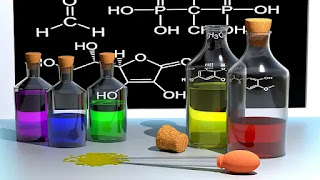JAWAHAR NAVODAYA VIDYALAYA
JETHIAN GAYA 1
CHEMISTRY
INVESTIGATORY
PROJECT
SESSION:-2020-21
NAME:-OM PRAKASH KUMAR
STANDARD:-XII
ROLL NO:-
--------------------------------------------------------
CERTIFICATE
This is to certify that OM PRAKASH KUMAR of
class XII has successfully completed the
investigatory project on the topic
“MOHR’S SALT”
Under my guidance during the year 2020-2021 in
the partial fulfillment of the chemistry practical
examination conducted by Central Board Of
Secondary Education
(CBSE)
TEACHER’S SIGNATURE PRINCIPAL SIGNATURE
ACKNOWLEDGEMENT
I would like to sincerely and profusely thank my
Chemistry teacher Mr. Arun Kumar Singh, for his
able guidance and support in completing my
Project.
I would also like to extend my gratitude to the
Principal for providing me with all the facilities that
was required.
Last but not least, I would extend my gratitude
towards all teaching and Non-teaching Staff of
JAWAHAR NAVODAYA VIDYALAYA JETHIAN
and towards my friends who have supported me to
complete this Project.
OM PRAKASH KUMAR
TOPIC
MOHR
SALT
THEORY
Mohr’s salt or Ammonium ferrous sulfate is the
inorganic compounds with the Formula
(NH4)2Fe(SO4)2.6H2O containing two different
Cations Fe2+ and NH4+. It is classified as a
a double salt of Ferrous Sulphate and Ammonium
Sulphate. It is a common laboratory reagent. Like
the other Ferrous Sulphate Salt, Ferrous
Ammonium Sulphate dissolves in water to give
the aqua complex which has octahedral molecular
geometry. Mohr’s Salt has a molar mass of
392.21 g/mol and it appears as a blue-green
solid.
PREPARATION
Mohr’s Salt is prepared by dissolving an
an equimolar mixture of hydrated ferrous sulphate
and ammonium sulphate in water; containing a
little of Sulphuric Acid and the Crystallization from
the solution. On crystallization light green crystals
of ferrous ammonium; sulphate separate out
Ferrous Sulphate FeSO4.7H2O
Ammonium Sulphate (NH4)2SO4
Mohr's Salt (NH4)2Fe(SO4)2.6H2O
MATERIAL REQUIRED
Apparatus:
Two beakers, china dish, funnel, funnel
Stand, glass rod, wash bottle, tripod
Stand, wire gauze, ferrous sulphate
Crystals, ammonium sulphate crystals,
Dilute sulphate crystals, dilute
Sulphuric acid, and ethyl alcohol.
CHEMICALS
Before coating, a steel sheet or rod is passed
through Sulphuric acid. This treatment produces
large quantities of ferrous iron(II) sulphate as a by
Product. A little more Sulphuric acid may be
added to ensure that the final solution remains
Slightly acidic. Since ammonia solution is
Moderately alkaline, the change from excess
Sulphuric acid to excess ammonia maybe
detected either with an indicator eg:- litmus paper,
or by measuring the pH of the mixture with a pH
meter
PREPARATION OF
STANDARD SOLUTION
OF MOHAR SALT:-
100ml of the decinormal solution of Mohr's salt is
prepared by weighing accurately accrual 3.92 0f
A.R. quality crystals, dissolving in water to which
40mI of dilute Sulphuric acid had been added (to
prevent hydrolysis) and making up the solution in
a standard measuring flask. The solution is
Well shaken.
Experimentally, it has been found that the mass
of Mohr's salt prepared is 8.19
PROCEDURE
1. Take a clean 250ml beaker, transfer 7g FeSO4
and 3.5g (NH4)2S04 crystals to it. Add 2.3 ml
dilute H2SO4 (to prevent hydrolysis)
2. In another beaker boil 20 ml H20 for 5
minutes (to expand air).
3. Add boiling hot H2O to the content in small
quantities. Stir until salts have completely
Dissolved.
4. Filter it and heat the filtrate in a china dish till
it concentrates on the crystallization point.
5. Place the china dish over the beaker full of
cold H20, cool it, and collect the crystals.
OBSERVATIONS
Weight= 18.6g
Color = Pale green
RESULT
In analytical chemistry, this salt is preferred over
other salts of ferrous sulphate for titration
purposes as it is much less proven to oxidation by
air to ferric or iron (Ill). The oxidations of
solutions of ferrous iron(II) is very much
dependent occurring much more readily at high
temperature and pH. The ammonium ions make
solutions of Mohr's salt slightly acidic, which slows
this oxidation process. It is also used to print in
print edition coating to extend the life of
the word version. Also, it had been used in
medicine, electroplating, and so on.
HEALTH HAZARDS
Inhalation:-
Causes irritation to the
respiratory tract symptoms may include coughing,
shortness of breath.
Ingestion:-
Causes irritation to the
gastrointestinal tract. Symptoms may include
nausea, vomiting, and diarrhea. Low toxicity in
small quantities but larger dosages may cause
nausea, vomiting, diarrhea, and black stool. Pink
urine discoloration is a strong indicator of iron
poisoning. Liver damage, coma, and death from
iron poisoning have been recorded.
Skin contact:-
Causes irritation to the skin.
Symptoms include redness itching and pain
Eye contact:-
Causes irritation, redness, and pain
CONCLUSION
Mohr's salt is named after the German chemist,
Karl Freidrich Mohr, who made many important
advances in the methodology of titration in the
19th century. It is a double salt. A double salt is
a substance obtained by the combination of two,
different salts which crystallize together as a
single substance but ionize as two distinct salts
when dissolved in water.
----------------------------------------------
READ 📖 MORE:-

Nice
ReplyDeleteWell Explained, Really Useful for us.
ReplyDelete